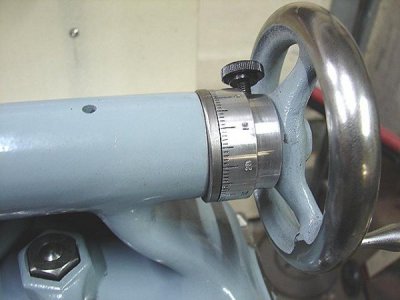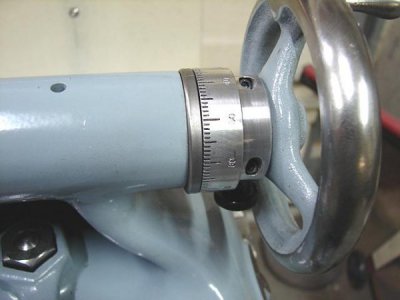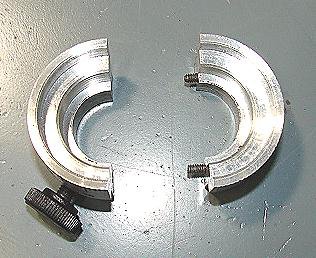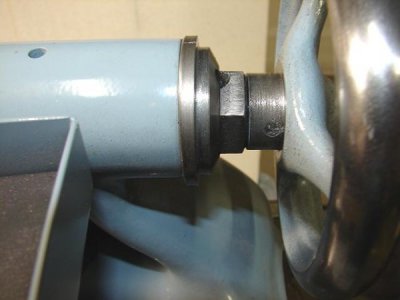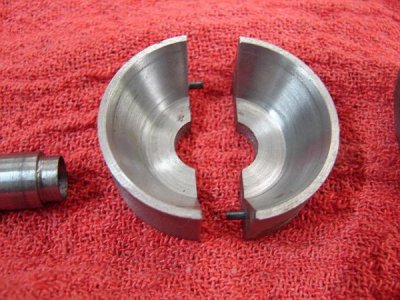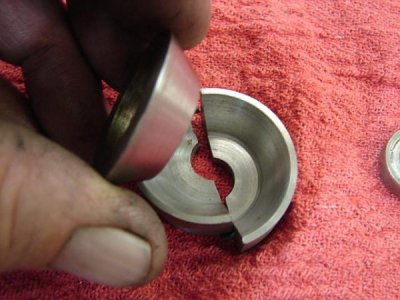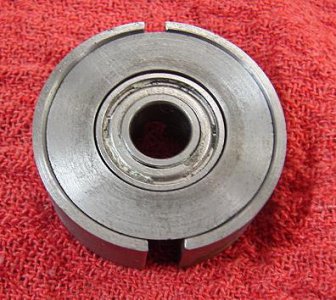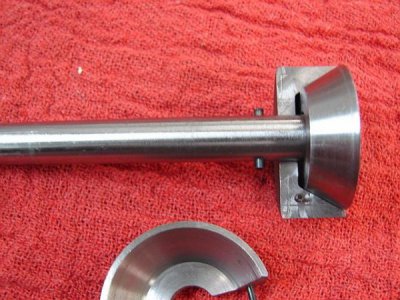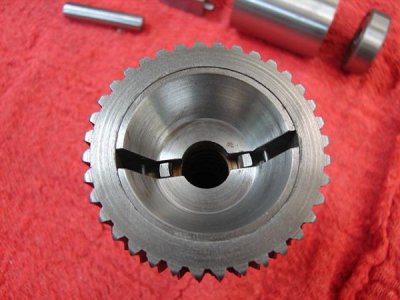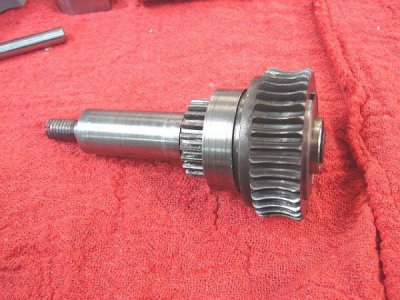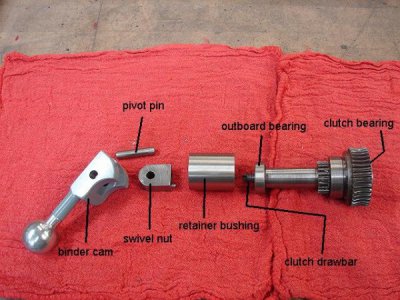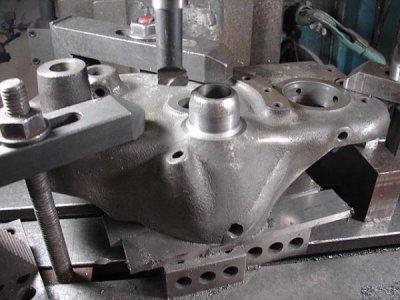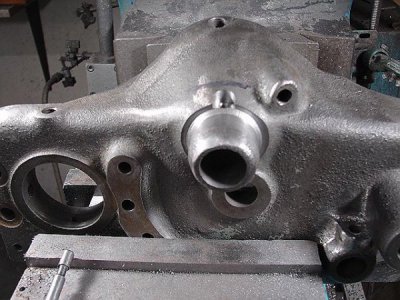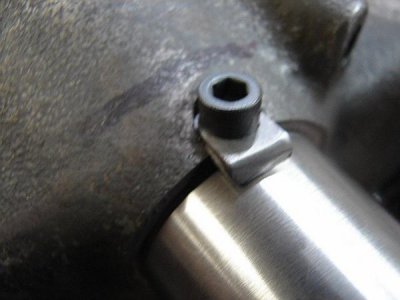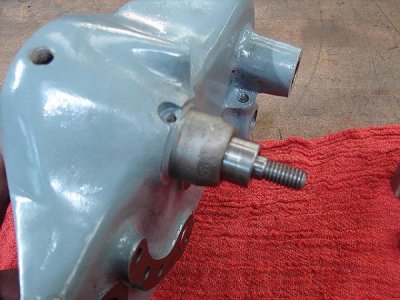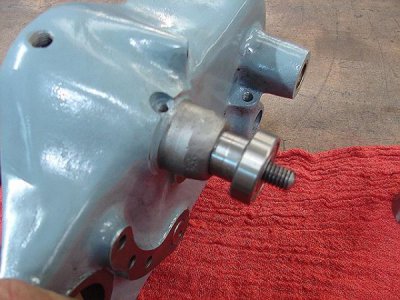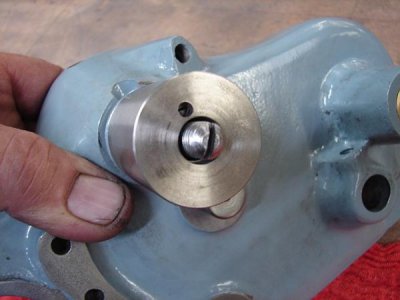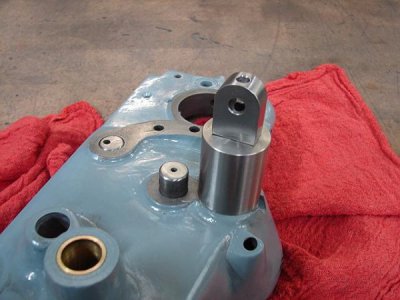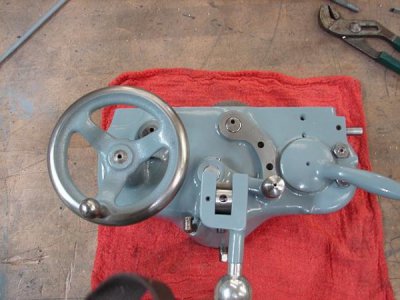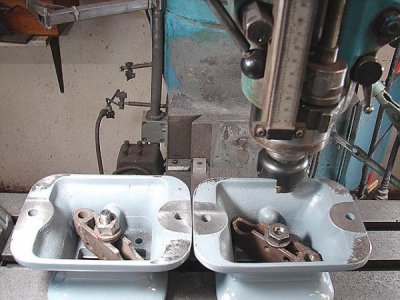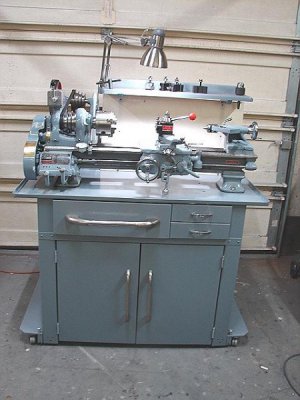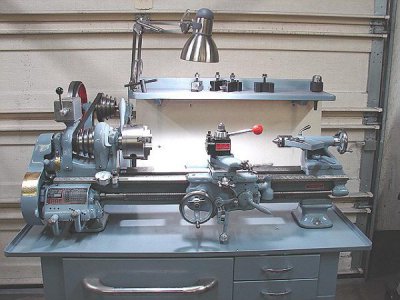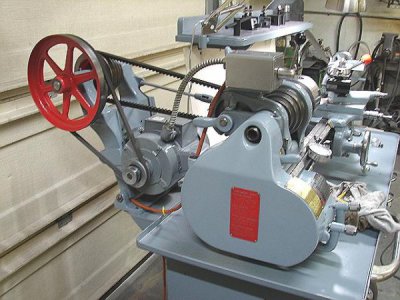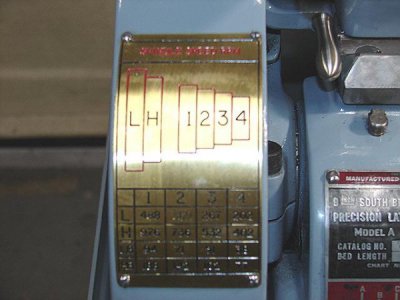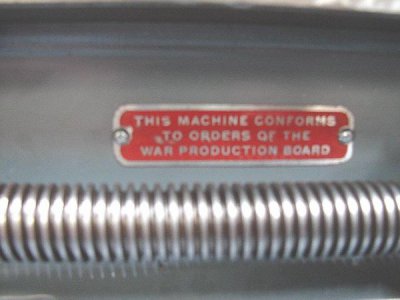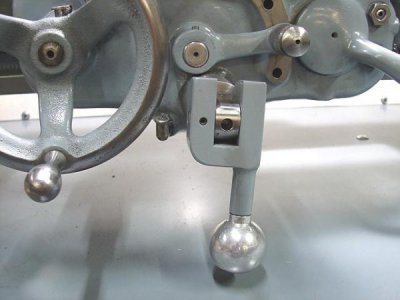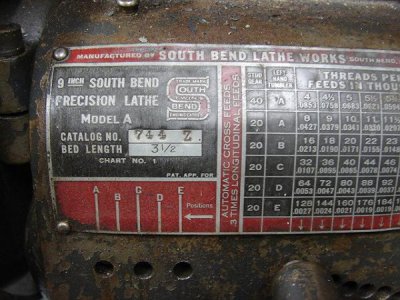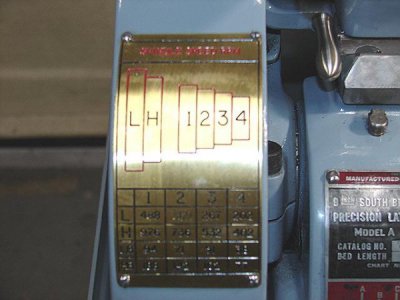While I had the spindle out, I thought it would be nice to have a spider to attach to the outboard end. I wanted it small enough that it would clear the gear cover hole, so it could be used with the cover closed. I figured the best way was to thread the spindle.
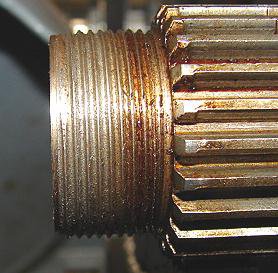
I cut the threads 1-1/16"-20, mainly because I had a tap that size to use on the spider.
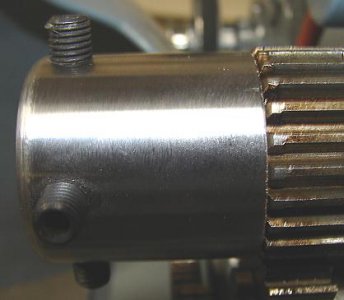
The threads didn't come out pretty as I wanted, but they are plenty good enough for the task. That end of the spindle has a gradual heat treat and it gets harder the closer you get to the gear.
The last major task I got into was the apron. After bath in kerosene got all the caked on crud off, I disassembled and cleaned some more. One of the most noticeable areas of wear is the slop in the carriage wheel, so I made a bushing to go into the apron casting. The shaft itself had little wear, but because of the integral gear and the handwheel is pinned to it, It didn't warrant a sleeve. Now it's not quite as tight as a new one, but quite tolerable.
Now this next step is quite a leap....and I don't know if anyone else has ever done this.
One of my pet peeves, or maybe I should say "preferences" is that I find star clutch knobs a bit out dated and cumbersome. When I got my first lathe, it was a heavy 10" with a toggle cam clutch lever. My second lathe was a 13", with a star knob clutch, that I found that was a p.i.t.a. after being accustomed to the lever on the 10". After I studied how the toggle cam clutch worked on the 10", I made a conversion for the 13".
The toggle cam clutch was available as an upgrade, available for all the SB lathes, sizes 10" and up. It was NEVER available for the 9's.
The conversion I did for the 13" is an exterior conversion. I say that because I never removed the apron to do it.
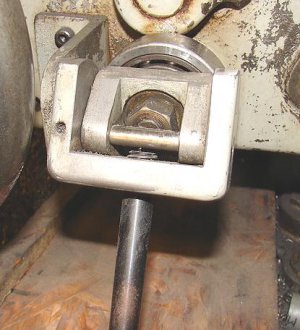
This consists of 2 bearings, the rear bearing is what the cam pushes against, and the smaller bearing which the yoke pulls against. The angle iron bracket keeps the whole affair from rotating. This was relatively easy on a machine of this size because the apron is larger.
This is the toggle cam lever on the heavy 10". All of the bearings are internal.
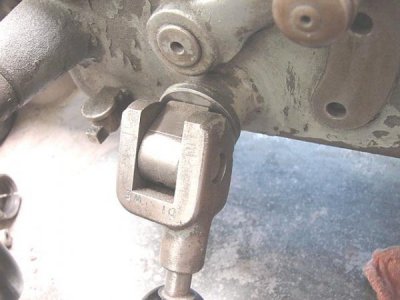
The toggle cam clutch itself is different from a star knob clutch, as it has a stack of clutch discs that applies friction to the face of the worm wheel, as opposed to the inside periphery of the star knob type.
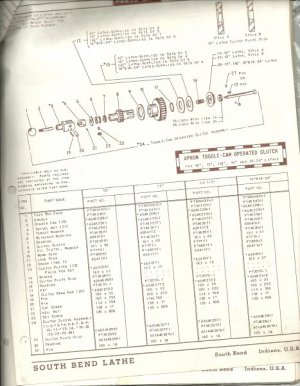
The star knob clutch uses 2 half moon wedges that expand the clutch shoes against the inside of the worm wheel when the knob is tightened.
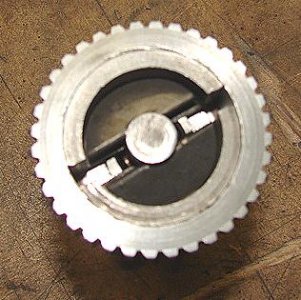
This locks the worm wheel with the clutch sleeve that is connected to the gear train. Once engaged, the whole assembly rotates as one.
The toggle cam clutch has thrust bearings on both ends, enabling the worm wheel and clutch sleeve to engage without rotating the lever. However, there is a key that retains the position of the lever assembly from rotating from static drag.
Now that is probably clear as mud, but it's easy to understand if you have the actual assemblies to study. My mission now is to figure out how to cram some bearings into the mix and make it work.






